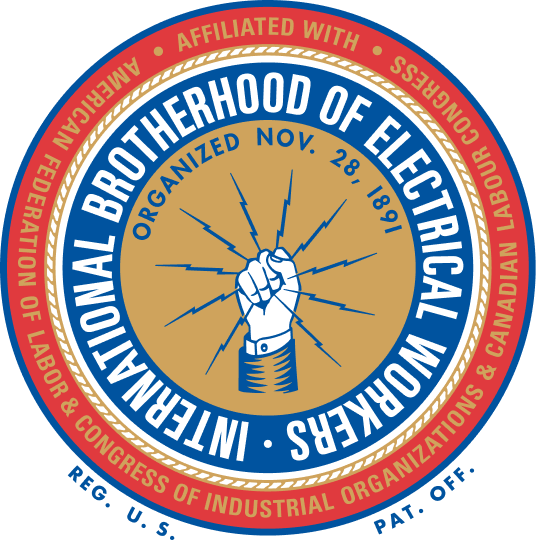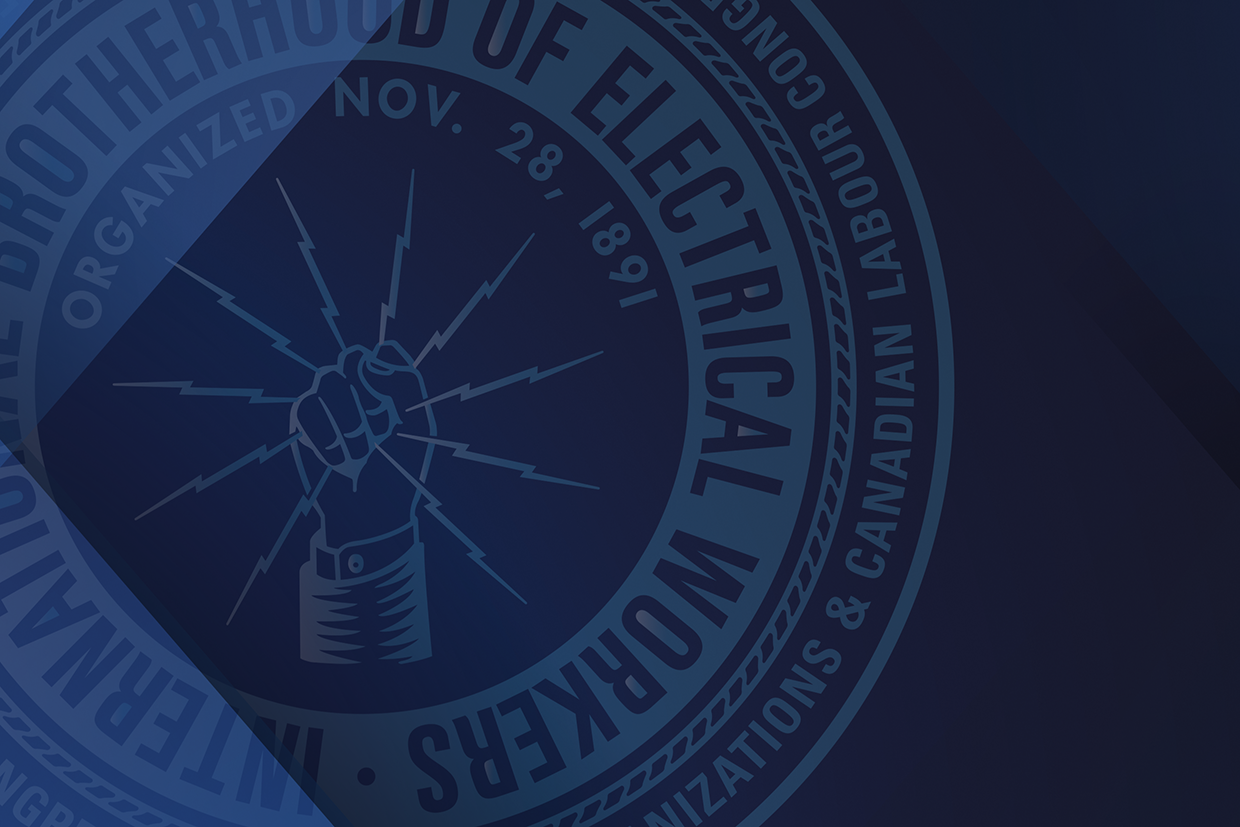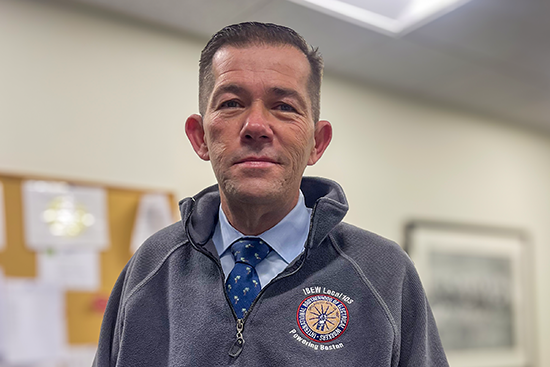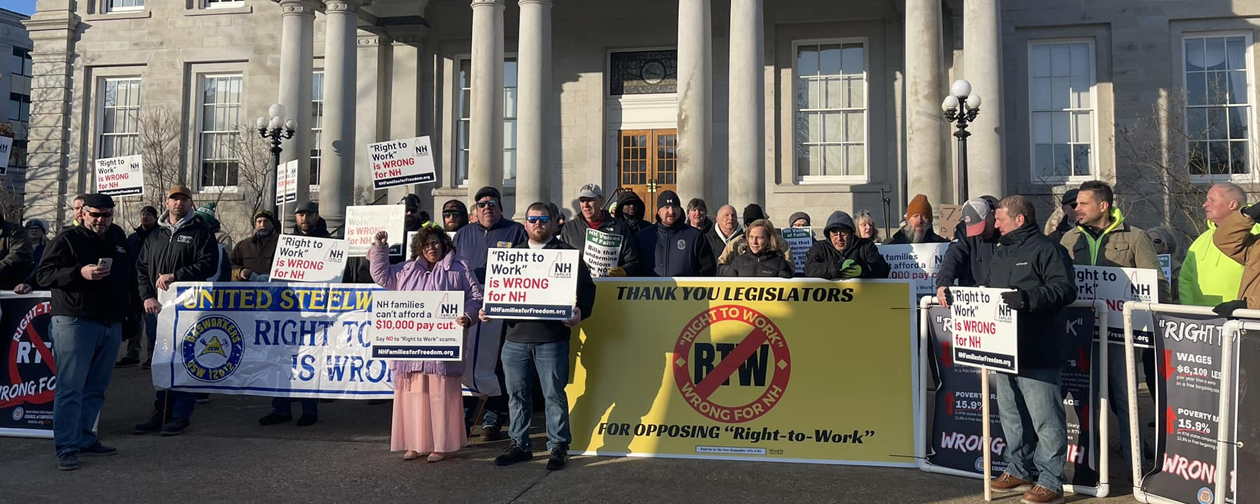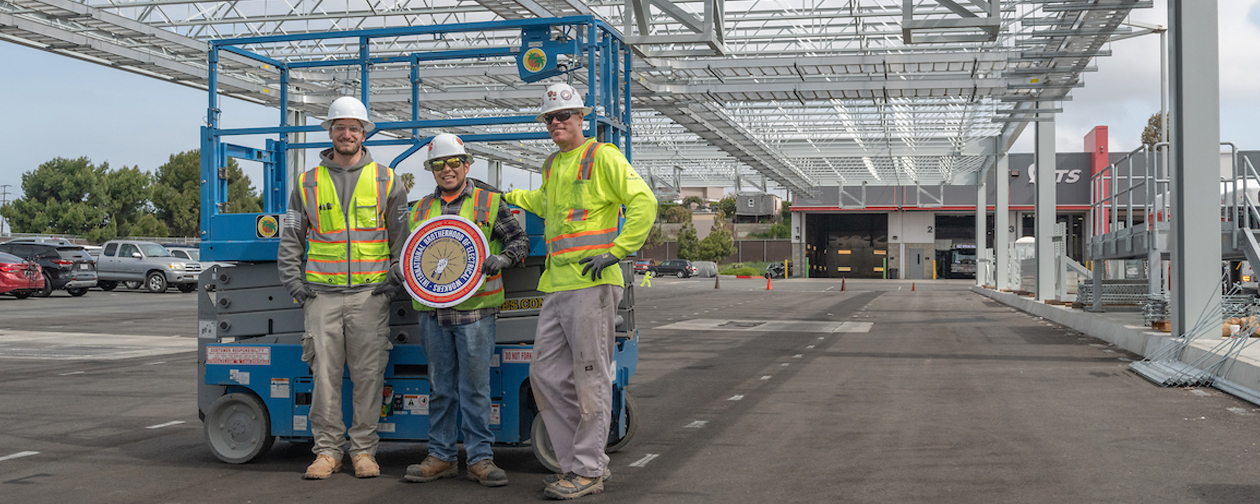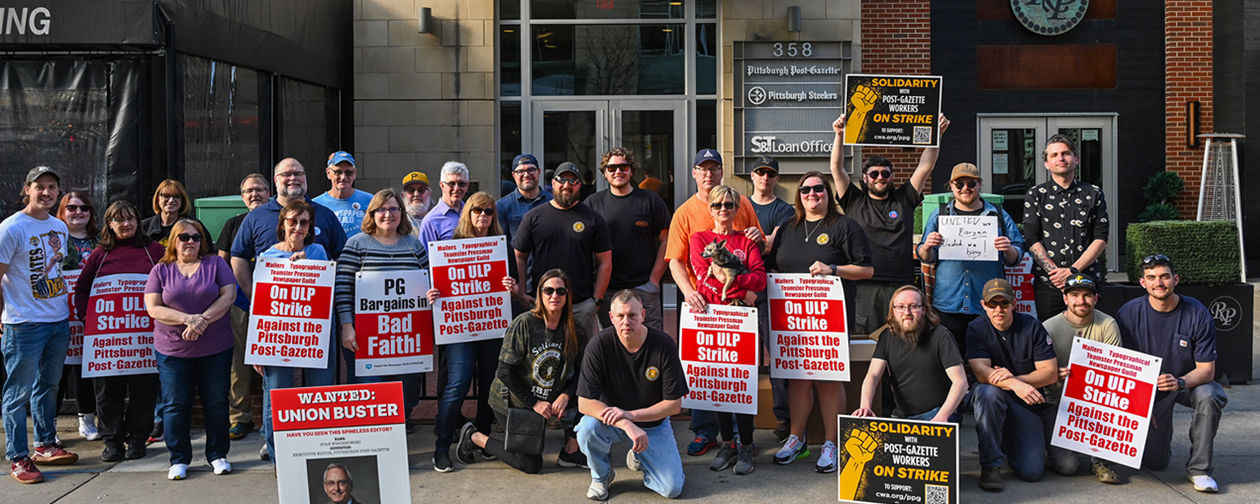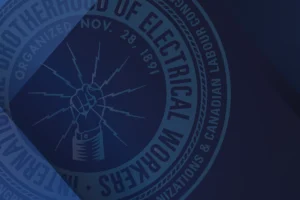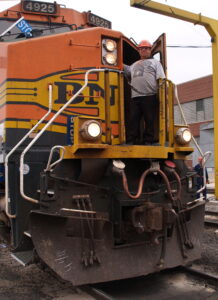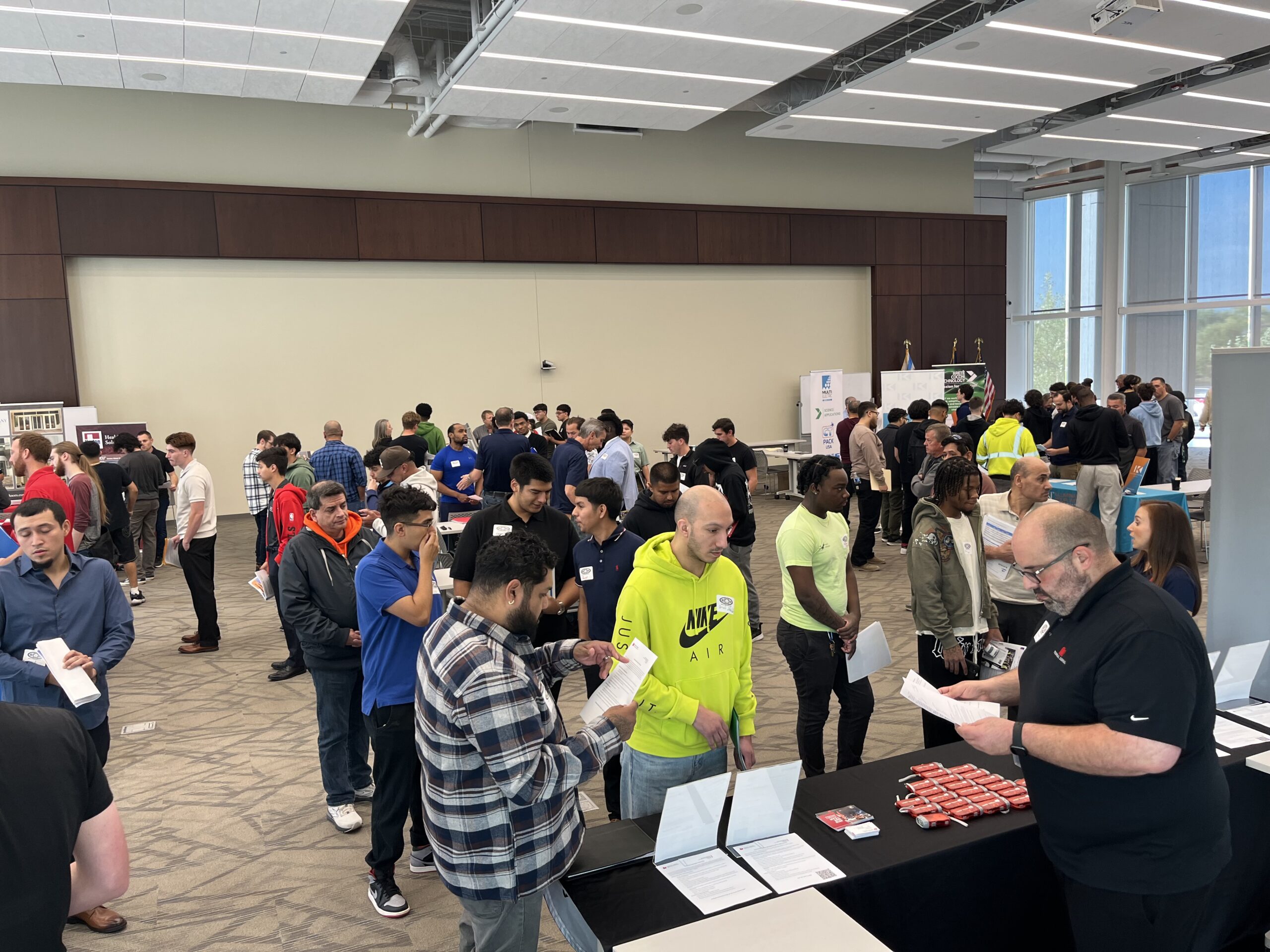
What does a local do when it has more apprentice applications than available spots and a need for workers in its manufacturing arm? If it’s Chicago Local 134, it brings them together for a job fair.
“It couldn’t have worked out better,” said Local 134 Business Manager Don Finn, who also represents the Fifth District on the IBEW International Executive Council. “It did exactly what we wanted it to do.”
Local 134 has the admirable problem of getting, on average, more than 1,000 applicants to its electrical construction and communications apprenticeship while only having about 200 spots available. And recently it got more than 4,000. It’s signatory manufacturing companies, however, have been having a hard time filling positions, particularly in the switchgear and lighting divisions. Ryan Madiar, a business agent who handles the majority of Local 134’s manufacturing signatories, saw an opportunity to solve both issues at once. They would host a job fair for their manufacturing companies and invite the applicants who didn’t get into the construction and communications apprenticeships to attend.
“When there is a need and the IBEW has the means, the IBEW has an obligation to help,” Madiar said. “These applicants are motivated and want to be in the electrical industry, and a lot of good candidates are turned away every year. I recognized that this is an untapped labor pool that could be made available to the signatory manufacturers.”
The first-of-its-kind event was held in October at the IBEW-NECA Technical Institute with about 20 signatories and close to 300 job seekers attending. About 25 have already been hired, Madiar said.
“We never dreamed what would come through that door,” Finn said. “It was a really positive event all around.”
Unlike the construction side, manufacturing doesn’t have a referral hall for when employers need candidates. That’s usually handled by the employers themselves and not all of them have a human resources department to do it. Madiar, who’s currently pursuing a master’s degree in Professional Studies in Human Resources and Employment Relations, started thinking about how Local 134 could bridge the gap between job seekers who want to work in the electrical industry and employers who need strong candidates.
“I learned about the recruiting process for employers, how expensive and time consuming it can be, and how high employee turnover can negatively impact profitability,” Madiar said. “In recognizing the need, I thought about some different options and landed on a job fair. Each of the signatory manufacturers I reached out to immediately said they would participate.”
Madiar pitched the idea to Finn and others, including Gene Kent, the director of apprenticeship programs. They were all on board. With very little advertising outside of a flyer that was sent to all the applicants and utilization of long-established networks, they ended up with a turnout that exceeded their expectations.
“It was successful because it was Local 134 reaching out to the applicants with an opportunity to become a member and prospective jobs ready to go,” Finn said.
The employers who attended covered a wide range of the industry, including switchgear, lighting, passenger train car, communications systems, appliance repair and generator maintenance. They even had the Museum of Science and Industry participate.
They also collected resumes from each job seeker who attended the fair and created a database that Madiar can now draw from in the event a signatory contacts the hall looking to fill a vacancy. It’s a way to keep interested applicants in the Local 134 family, Finn and Madiar said.
“If I could take 4,000 apprenticeship applicants I would, but it’s just not possible,” Finn said. “We don’t want to lose them though. This gets everyone under our roof. At the end of the day, they’re all IBEW.”
The database is also a way to strengthen ties with signatories.
“A lot of employers said that they didn’t have to do recruitment for a year based on the number of resumes they received at the fair,” Madiar said. “This saves them time, money and gives our signatory employers a competitive advantage over nonunion rivals.”
Madiar also pointed out that someone who doesn’t get into the construction apprenticeship but does get hired by a manufacturing company could very well be building the components that inside electricians are installing on jobsites, which gives them an advantage should they decide to apply for the apprenticeship again.
“It provides an alternative career path for apprenticeship applicants that has never been offered before,” he said. “And by Local 134 providing more employment opportunities to job seekers in the community, it enhances our already great reputation.”
Madiar also sees a potential benefit with future contract negotiations.
“This could strengthen our position at the bargaining table since we’re providing a solution to help signatory employers thrive.”
The success of the job fair, which Local 134 plans to do again this year, could be another tool for organizing, Madiar said.
“If you think about it, the manufacturing and construction sectors, though treated as separate entities, are intricately connected. One branch feeds the other,” he said. “That concept can be applied to organizing.”
Madiar noted how in manufacturing organizing, they are competing with other unions, but having the construction and communications apprenticeships as something to offer as a future career option puts the IBEW at an advantage. Someone could start out on the factory floor in a switchgear shop and by the end of their career they could be a foreman, superintendent, or even a business manager.
“Other unions do not have the boundless opportunity in the electrical industry that IBEW apprenticeship programs offer,” Madiar said. “The message to workers is that if you join the IBEW, you have more prospects for career growth than any other union or employer out there.”
